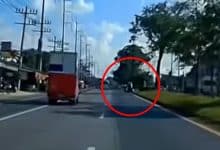COVID: How India is vaccinating isolated tribes in insurgency-hit areas

Minpa village, an isolated settlement in Sukma district in Chhattisgarh state, has just over 650 residents. Located nearly 500 kilometers (310 miles) from the state capital Raipur, the village has no electricity, no potable drinking water supply and no road connectivity.
One has to embark on an arduous journey to reach the place as it is located in the dense Dandakaranya forest, which remains a no-go area for many despite the increased presence of security forces in the region.
In June last year, 17 security personnel were killed and scores injured in a deadly attack by Maoist rebels.
Despite the inhospitable terrain and the precarious security situation, progress has been made over the past couple of years when it comes to providing access to medical services.
“This was a closed community and unapproachable. But in the last two years we have worked hard, won trust among the villagers and brought basic medical services to them,” Kapil Kashyap, a block development officer from Sukma, told DW.
That seems to be showing its impact. Pritam Dule, a volunteer at a school in Chintagufa in Sukma, is part of the COVID-19 tracing team, whose task is to track down positive coronavirus cases in the area and do contact tracing.
“It was difficult initially to approach the villagers as many thought the disease was a conspiracy, and it took a lot to convince them that it could kill people,” Dule told DW.
Vaccine hesitancy and inaccessibility
It may seem strange but nearly 95% of the village’s inhabitants have had their first shot of the COVID vaccine and about 40% have received two doses.
Even though vaccine hesitancy and inaccessibility have challenged the inoculation campaign, a push by a collective of NGOs, local networks and health volunteers has managed to persuade the wary and hard-to-reach population to accept the shots.
“I wanted my two daughters to be safe and the health workers convinced me that the vaccination was safe. I agreed,” Oyam Medeme, a mother of two, told DW.
Sopi Sika, another young mother told DW: “Surely, I was scared. We had not seen health workers in this village for years and suddenly they [health officials] appeared. After my first jab, I could not sleep. But I am okay today.”
Pandemic worsened the region’s problems
Minpa is illustrative of what plays out across various parts of Chhattisgarh, a heavily forested central Indian state with nearly 30 million people.
The state is home to a tribal population estimated to be over 7 million.
Many of these tribes are isolated and dwell deep in the forests, which cover over 40% of the total geographical area.
Chhattisgarh is also the epicenter of India’s Maoist insurgency. The Maoists, also known as Naxals, have waged an armed struggle against government forces for decades.
They say they are fighting for the poor who have been left behind in the South Asian nation’s economic boom.
“If you are not hit by the Maoists, malaria will surely hit you,” Katham Kosi, a health volunteer, told DW.
Besides poor literacy rates and lack of economic development, Chhattisgarh also has high levels of malnutrition and anemia among children and women.
“We had to rely on the slogan of development, coupled with trust and security. The pandemic escalated the problems in a region starved of a health care infrastructure. It was challenging,” Syam Sudheer Bandi, a UNICEF official in Raipur told DW.
A long, hard road ahead
Chhattisgarh’s official COVID-19 infection count is over 1 million, while the death toll stands at more than 13,500. The overall pace of vaccination has been slow because of problems reaching all parts of the conflict-prone state.
Some officials point out that 14 out of the state’s 27 districts are affected by civil strife, hindering the vaccination campaign.
To combat the problem, several district administrations have roped in local youth volunteers, health workers and NGOs to respond and deal with COVID outbreaks.
An initiative launched in September 2020 aims to increase participation of local youth in health campaigns, particularly those targeting marginalized groups and vulnerable communities.
“In this way, it gives the youngsters a chance to contribute to the village and help improve their condition, and it is helping. Volunteers explain COVID-appropriate behavior to the community and are also involved in the vaccination process,” said a health official in Bastar district.
Another initiative called “Bapi” (grandmother), not linked to COVID directly, is a joint project by the district administration and UNICEF. It is aimed at decreasing the rate of malnourishment and raising awareness among the rural women about health and child care.
But the initiative is now also helping deal with COVID.
“As Bapis are elder women in their own communities, rural women confidently follow their tips and take good care of themselves and their kids. It is also helping in addressing COVID-19 as the emphasis is on health care,” Deepak Soni, Dantewada’s district magistrate, told DW.
SOURCE: DW News
Latest Thailand News
Follow The Thaiger on Google News:


























